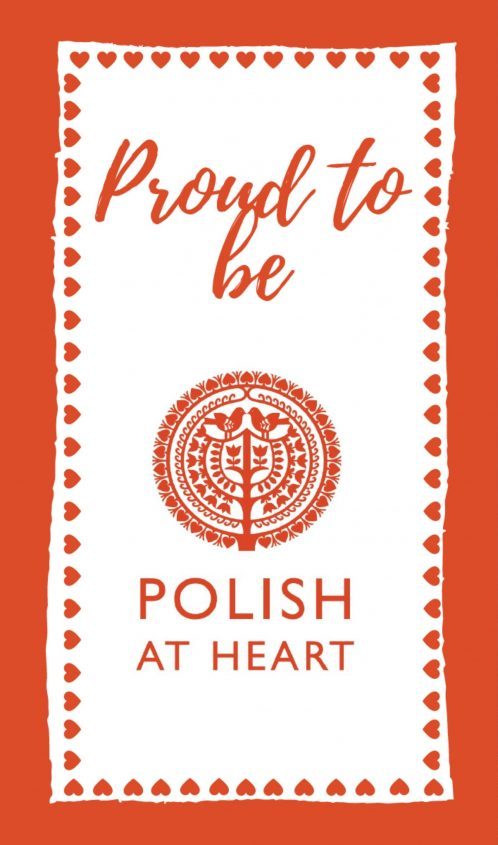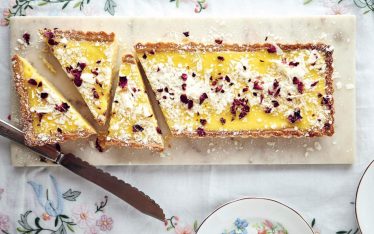Did you know pre-war Polish cuisine, that of our grandparents or great grandparents was quite different to current dishes? For Wielkanoc (Easter) there were no faszerowane jajka (stuffed eggs), no żurek (sour soup) or Russian salad but a whole pig or joint and serownik similar to sernik (cheesecake).
Pre-war cookbook recipes
A well-known cookbook from pre-war Lwów written by Maria Disslowa in 1931 had this list of recommended dishes for Easter Breakfast:
- Wędliny, (cold meats)
- jajka (hard boiled eggs)
- majonez (mayonnaise), sos tatarski (tartar sauce) lub sos Cumberland (or Cumberland sauce)
- Barszcz (beetroot soup) w filiżankach z pasztecikami (in cups with savoury pastries)
- Prosię pieczone (roast pig) lub indyk pieczony z kasztanami (or roast turkey with chestnuts)
- Borówki lub kompot z jabłek i wiśni (blueberries or compote of apples and cherries)
- Ciasta i mazurki (cakes and Mazur shortbread)
Babka queen of the table
Babki (yeast cakes) and butter or sugar baranki (lamb figurines) are still, however, a constant and form the centrepiece of the table. Polish women have been baking babki since the 17th century and King Stanisław Leszczyński contributed to making them popular in the whole of Europe eg.Rhum Bhaba in France. In Poland there were babki made with egg whites, with yeast, with almonds, they were boiled, steamed, fluffy and piaskowe (sandy in texture). In the 19th century manor house they presided over everything.
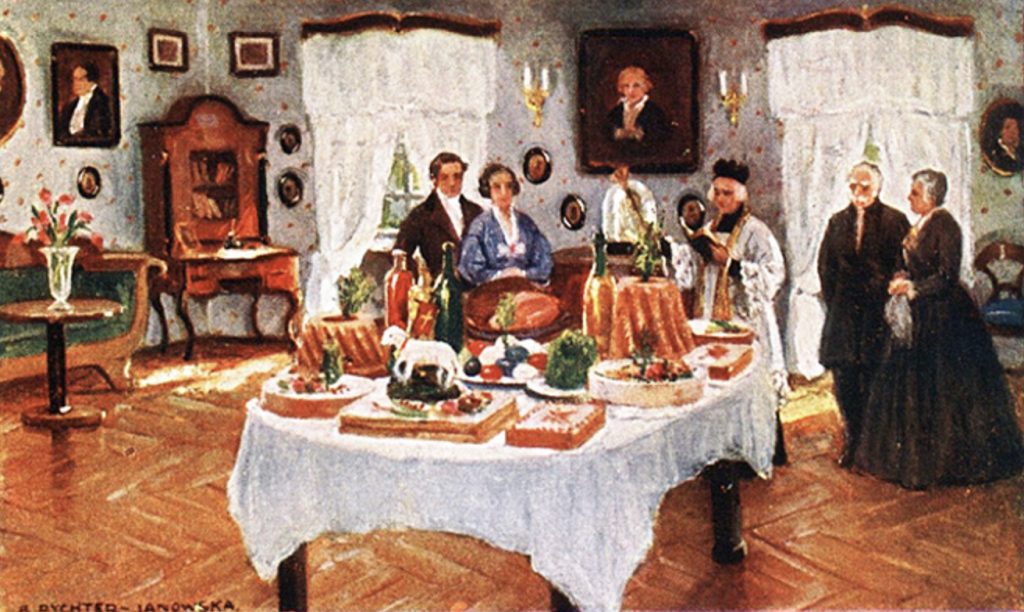
Bronisława Rychter-Janowska/ public domain
During the inter war period of the 20th century:
“The Easter table stood out, covered with a snow-white tablecloth, decorated with catkins, hyacinths, periwinkle, while pisanki (decorated eggs) and blessed eggs were surrounded by evergreen box wood. In the center of the table was a large decorative pot with oats, within it, the white lamb with a red flag by its side. Wawrzynek wilczełapo (daphne mezereum, a tall woodland flower) stood modestly in small bottles giving off a lovely scent to let you know its presence. This plant was one of the traditional decorations for our family Easter table. Of other dishes there were mainly babki (yeast cakes), large, fluffy cakes. There were very sweet ones to have with coffee or hardly sweet for eating with cold meats, as ordinary bread was only there to accompany studzienina (Żimne nogi – savoury jelly).” From „Wspomnienia lat szczęśliwych” by Janina Augustyn-Puziewicz.
Babki, often made with saffron needed half a litre of egg yolks! This Babka staropolska (old Polish) recipe comes from Maria Disslowa’s cook book! Many others have 10 or 12 egg yolks in them. Baking was a deathly serious ceremony. If it didn’t work it was seen as bad luck starting from this moment. In 1937 a magazine reminded women it was their role to guard these manifestations of national culture. Mazurki meanwhile, whilst named after the central area of Poland Mazowsze may have come from Turkey around the same time as Babki, decorated exquisitely and seen as a rich reward for keeping lenten traditions.
Święcenie in different homes
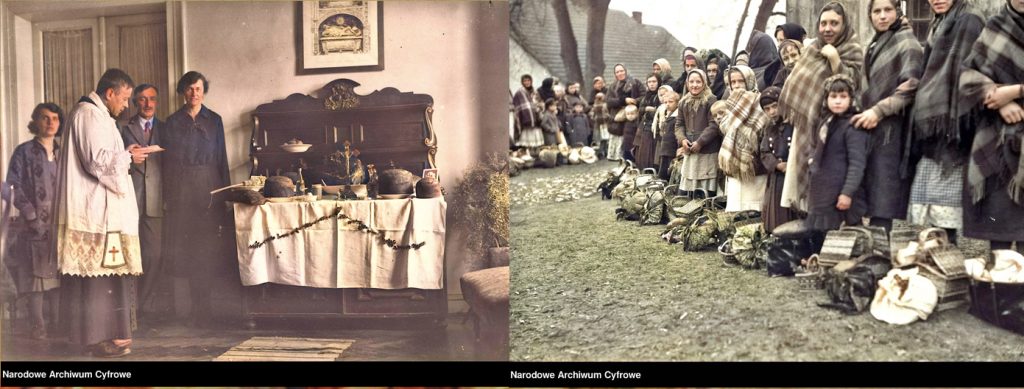
Święcone, the Easter blessing was carried out not inside churches but in villages, the priest travelling around his parish to bless the baskets prepared by local families. He would also visit the homes of the nobility who displayed their food on tables. The contrast above is quite shocking. Easter dishes laid out on a sideboard were just a dream for many. During the interwar years, women were used to difficult times, a world war, conflicts with neighbouring countries were followed by an economic crisis. Whilst there may have been some fine dining in this time, the majority of homes would have had very little on their tables though cakes and some meat were obligatory. Local churches, the police or other organisations would put together parcels for the poor, with sugar, fat, eggs and a little sausage to which households added decorative elements, especially flowers and greenery.
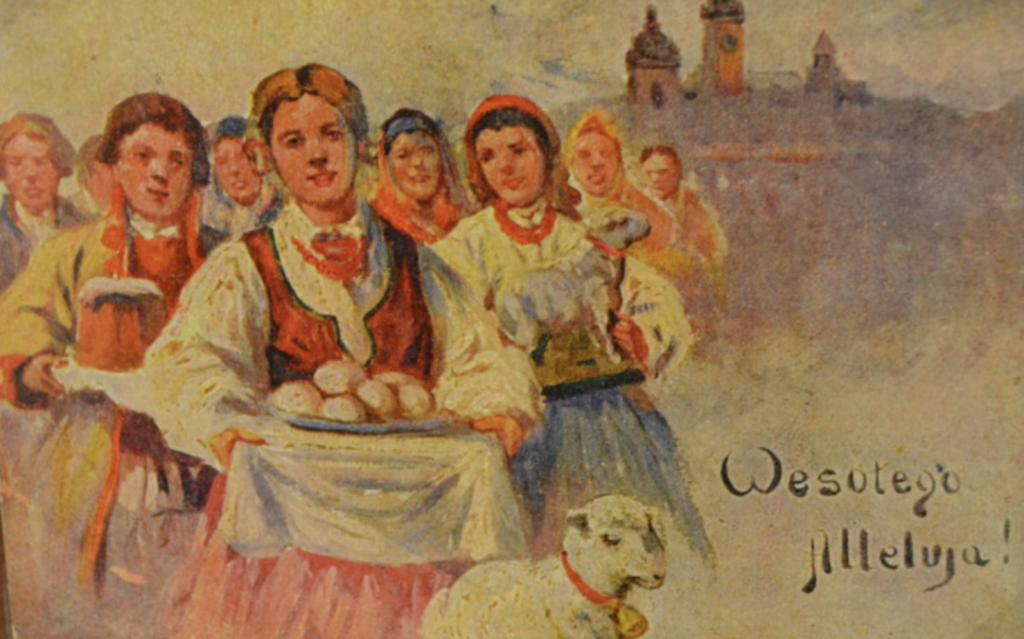
Easter Card 1931 – www.wiano.eu
Many of the nobility would be equally as poor, clinging onto their position in society, having had land and money confiscated during the Partitions of Poland especially in areas previously under Russian rule. Yet the postcards of the time showed an optimistic view of Easter with plentiful and colourful food.
Contrast this with the post war “Kuchnia Polska”
Kuchnia Polska, the cookbook known to many of us was first published in 1959 when the Polish palette changed quite significantly due to supply and change of customs and taste, for instance the popular kotlet or schab wieprzowy was by no means a staple part of pre-war Polish cuisine, nor particularly was rosół z makaronem or zupa pomidorowa. For Easter the suggested dishes are:
- gotowane jajka (hard boiled eggs)
- wędliny (cold meats) and pasztet cielęcy (veal pate)
- szynka wieprzowa (ham)
- bigos (hunter’s stew)
- schab pieczony – roast pork or pieczeń rzymska (roman roast)
- galaretka (savoury jelly)
- chrzan (horseradish sauce)
- babka – yeast cake and mazurki (shortbreads)
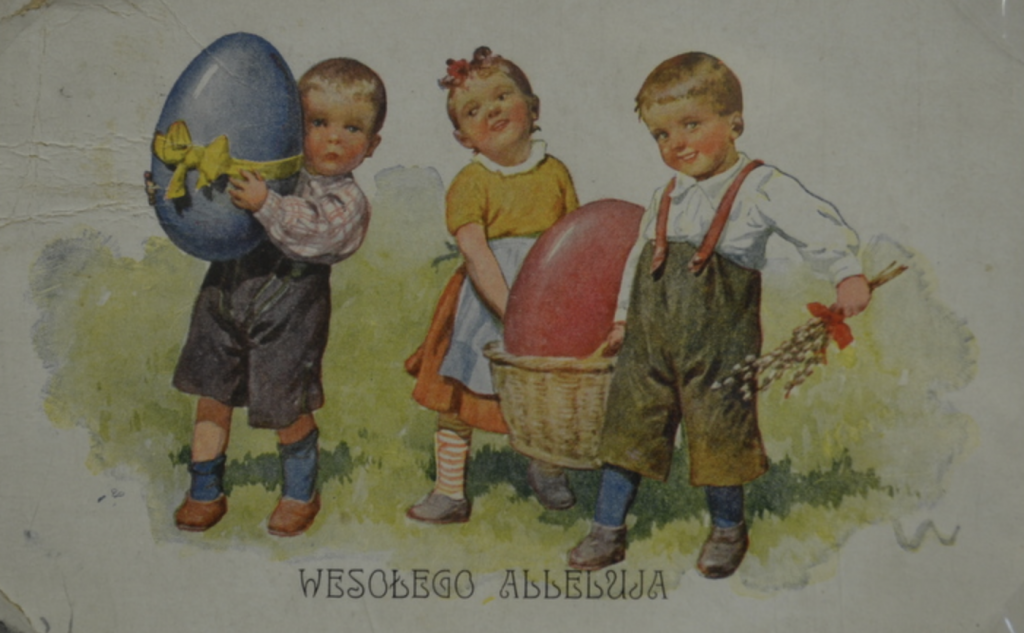
Easter card 1935 wiano.eu
This is closer to what we eat today when pasztet (pate) and biała kiełbasa are now seen as absolute musts for Easter in Poland. As for Maria Disslowa, her book was only republished outside of Poland, in France, Germany and the UK in the late 40s and 50s but never in Poland until 1989 – quite telling in itself given Poland regained its independence that year.
And for Emigres?
Across the world after World War II, Poles struggled to settle down into family life after years of trauma. Teenagers experiencing starvation or making do with what was available in India or Africa had no idea how to host celebrations or making Polish food from foreign products. Finally in 1958 Maria Disslowa’s book was republished, explaining exactly how to continue these pre-war traditions.
Passing on the national traditions
“Forced to live in exile, we have not only a special sentiment to these dishes which remind us of our childhood and family home and we realise that we should keep and pass them onto our children together with other national traditions.”(Editors of Maria Disslowa’s “Jak Gotować”, London 1958)
What forms our culinary traditions? Is it only the tastes and recipes handed down through the generations? We often find new recipes which may be old and try them out. I never made mazurki until one year my parents were in Poland for Easter and I was invited to a Polish house so I phoned my Aunt for ideas and she told me how to make a mazurek, which I have been making ever since. We mix old from our childhood and new to form new traditions for our children, adapted to our times and this is how traditions continue.
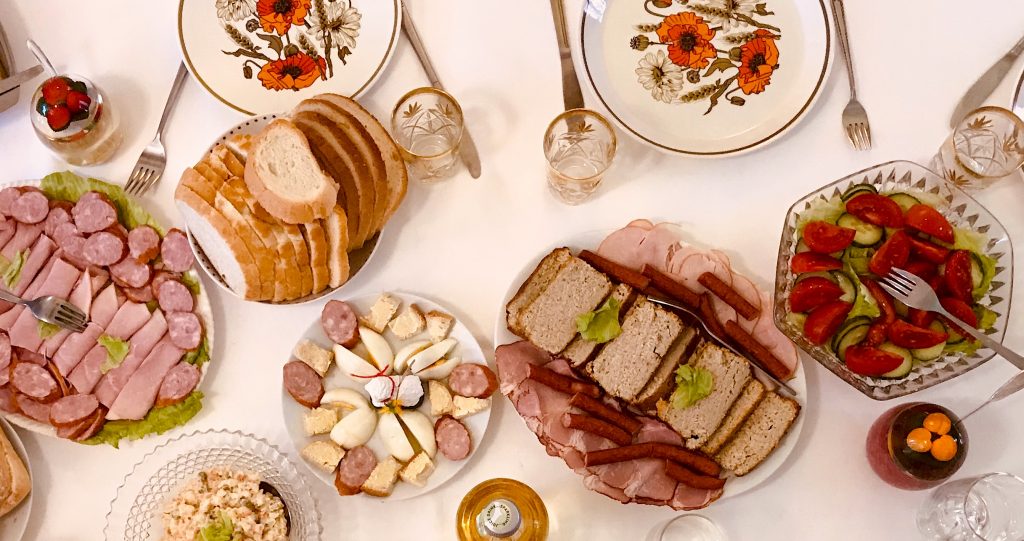
The fact that you make certain dishes to certain recipes usually from scraps of paper worn to shreds by years of use, means that you are keeping the traditions taught to you. I am currently making pasztet (pate) for the first time in line with my mother’s and grandmother’s recipe which I can add to my handwritten collection, meaning much more to me than the cookery tomes I also consult. They, like the ones I saw as a child as my mother and grandmothers cooked and baked, keep me in mind of what’s important this Easter and that is a traditional family celebration.
Wesołego Alleluja!
Happy Easter!
The featured painting is „Święcone” by Władysław Tetmajer
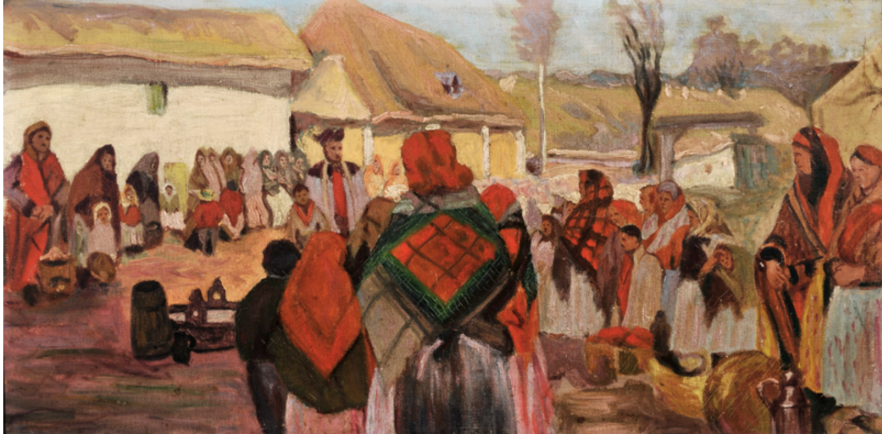
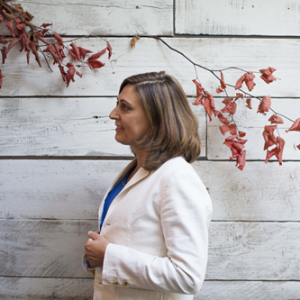
 1.Tracing Family History pre-WW2
1.Tracing Family History pre-WW2 2. Tracing Family History WW2
2. Tracing Family History WW2